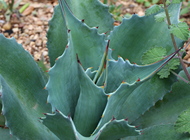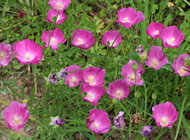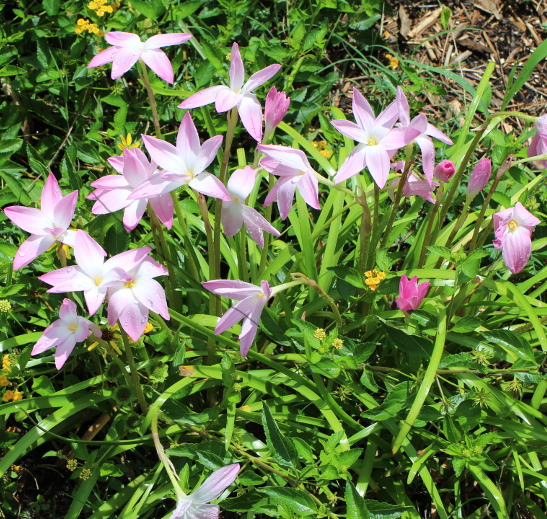 |
Garden journal entry |
 |

Zephyranthes 'Labufarosa' produces a big flush of flowers |
June 27, 2020. Back in Pennsylvania, I used to focus my seed-starting campaign on alpine plants for the rock garden (which were mostly doomed to fail, but no matter – it was fun trying) and perennials for temperate climates. Since moving to Houston, I've had to adjust my palette of target plants, since most of the types I used to grow stand no chance in this subtropical climate. Among my new selections, two groups stand out: the agaves (along with their allies: hesperaloe, manfreda, yucca), and the rain lilies (habranthus and zephyranthes). I've tried numerous species of each, mostly through the NARGS seed exchanges of the past three years. The agaves that are still alive (many of them are finnicky, I've found) are mostly still small, and certainly many years from blooming. But a good number of the rain lilies have come into their own by now, the first ones showing their flowers last year, and coming back more strongly this year. This past week marked the end of a period of hot dry weather, as a series of thunderstorms swept through our area – and sure enough, the rain lily ladies responded by bursting into bloom – over the past couple of days, I counted five species/varieties. The prize for most floriferous display went to Zephyranthes 'Labufarosa', the only one I didn't grow from seed (it came from the nursery at Peckerwood Garden, and has been in our garden the longest). The flowers on Habranthus robustus are even larger, and our third-year plants rival 'Labufarosa' for sturdiness and flower production. Zephyranthes dichromantha has also been building strength for two years now, and our plants are in their third bloom cycle of the year, producing a nice display of smaller soft-yellow flowers that open from burgundy buds. Two others yellow ones are showing their blooms for the first time this year: the brassy-yellow Z. citrina and the copper-tinted H. tubispathus. That means that all the rain lilies whose flowers I've seen thus far in our garden were blooming almost simultaneously, with the exception of Z. katheriniae, whose red flowers I saw a week or two ago, and Z. macrosiphon, which showed off its perfectly-petaled pink flowers last week. Several others have yet to flower – some are more difficult and may require several attempts to grow from seed before I succeed, and others I just started from seed this year, so I may need to wait another year or two to see them strut their stuff. It's fun to collect plant types – through the years, I've tried my hand at Thalictrum, Amsonia, Eryngium, Geranium, Penstemon, and Scutellaria – and the rain lily clan is worthy of another mini-obsession. I hope to show off evidence of quite a few more in years to come! |
Last modified:
September 09, 2009
Contact me
|